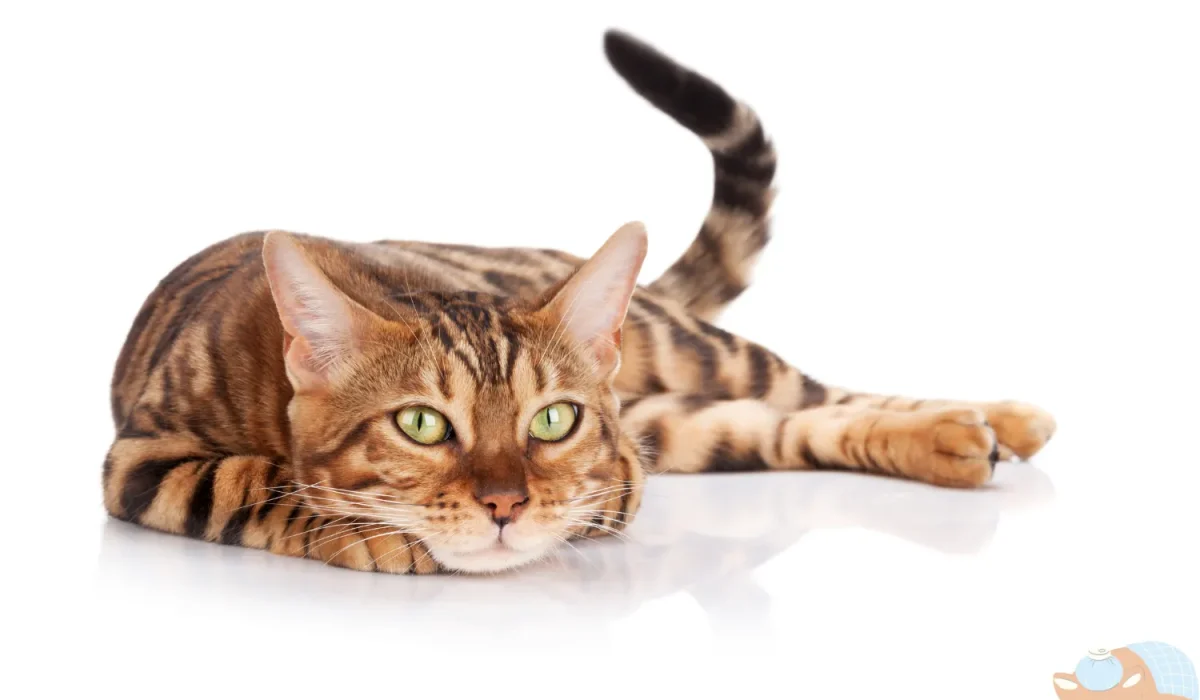Bengal cats are known for their beautiful coats, playful nature, and high energy levels. But like all breeds, they can have specific health problems. Knowing what to watch for can help keep your Bengal cat happy and healthy. This article covers common health concerns, how to prevent them, and when to see a vet.
Common Health Issues in Bengal Cats
Hypertrophic Cardiomyopathy (HCM)
Hypertrophic Cardiomyopathy (HCM) is a heart disease that affects many cats, including Bengals. It causes the heart muscle to become too thick, making it harder to pump blood. Signs include heavy breathing, tiredness, and less activity. Since HCM can be genetic, regular vet visits and heart scans can help detect it early.
Progressive Retinal Atrophy (PRA) and Cataracts
Progressive Retinal Atrophy (PRA) is an inherited eye disease that causes vision loss over time. Cataracts also affect the eyes, making them cloudy and reducing sight. While there is no cure for PRA, early detection can help manage symptoms. Watch for signs like bumping into things or difficulty seeing in low light.
Patellar Luxation (Luxating Patellas)
This condition happens when the kneecap moves out of place, causing pain and trouble walking. A Bengal with this issue may limp or avoid jumping. Mild cases may not need treatment, but serious ones might require surgery. Keeping your Bengal at a healthy weight and using joint supplements can help.
Kidney Issues or Chronic Renal Failure (CRF)
Kidney disease is common in older Bengals. Chronic Renal Failure (CRF) makes it harder for the kidneys to remove toxins from the blood. Signs include drinking much water, urinating often, losing weight, and lacking energy. Feeding a diet with the proper nutrients and ensuring your cat drinks enough water can help.
Gastritis and Digestive Problems
Bengals have sensitive stomachs and may develop gastritis (inflammation of the stomach lining) or other digestive troubles. Changes in food, infections, or eating something terrible can trigger problems. Symptoms include vomiting, diarrhea, and loss of appetite. A high-quality, grain-free diet can help prevent stomach issues.
Lymphoma and Cancer Risks
Lymphoma is a type of cancer that affects the immune system. It can appear in different body parts, including the stomach and intestines. Signs include weight loss, vomiting, diarrhea, and reduced appetite. If diagnosed early, treatments like chemotherapy can improve the quality of life.
Pancreatitis
Pancreatitis is an inflamed pancreas that causes stomach pain, vomiting, and loss of appetite. This condition can be caused by diet or infections. A vet may prescribe medication and a special diet. Feeding your Bengal a high-protein, low-fat diet can help prevent this issue.
Feline Lower Urinary Tract Disease (FLUTD)
Bengals can suffer from Feline Lower Urinary Tract Disease (FLUTD), which includes bladder infections, blockages, and inflammation. Signs include straining to urinate, blood in urine, and going to the litter box frequently. Providing fresh water, feeding wet food, and reducing stress can help prevent urinary problems.
Skin and Coat Issues
Bengals have soft, shiny fur but can get skin problems like allergies, fungal infections, or flea reactions. Regular brushing, a healthy diet, and flea prevention can keep their coat in good condition.
Anesthetic Allergies
Some Bengals react badly to anesthesia, which can cause complications during surgery. If your cat needs a procedure, let your vet know about possible sensitivities so they can use a safe option.
How to Keep Your Bengal Cat Healthy
Regular Veterinary Check-Ups
Taking your Bengal to the vet for check-ups can help catch health issues early. Annual exams, dental care, and vaccinations are key to keeping your cat healthy.
Proper Nutrition and Hydration
Bengals need a protein-rich diet, healthy fats, and essential nutrients. Wet food or a raw diet can help keep them hydrated and support kidney health. Avoid feeding them human food or low-quality kibble.
Exercise and Mental Stimulation
Bengals are active and intelligent cats that need exercise and challenges. Climbing structures, interactive toys, and regular playtime will keep them happy and prevent weight gain.
Preventative Care for Heart and Kidney Health
Since Bengals can develop heart and kidney problems, managing their diet and weight is essential. Regular vet visits and health screenings help monitor their condition before serious issues arise.
Frequently Asked Questions
Are Bengal cats prone to specific genetic diseases?
Bengals can inherit conditions like HCM, PRA, and patellar luxation. Reputable breeders test for these diseases to lower the risk.
How can I prevent kidney disease in my Bengal cat?
Ensuring your Bengal drinks enough water, feeding wet food, and scheduling vet check-ups can help protect their kidneys.
What are the early signs of HCM in Bengals?
Signs of Hypertrophic Cardiomyopathy include fast breathing, tiredness, weight loss, and fainting. Regular heart check-ups can help catch it before it gets serious.
Should I be concerned about Bengal cats and anesthesia?
Some Bengals have bad reactions to anesthesia. If your Bengal needs surgery, talk to your vet about safer options.
Conclusion:
By knowing the common health issues Bengals face, cat owners can take steps to keep their pets healthy and happy. Regular vet visits, a nutritious diet, and an active lifestyle can help prevent many of these problems and ensure your Bengal lives long.

